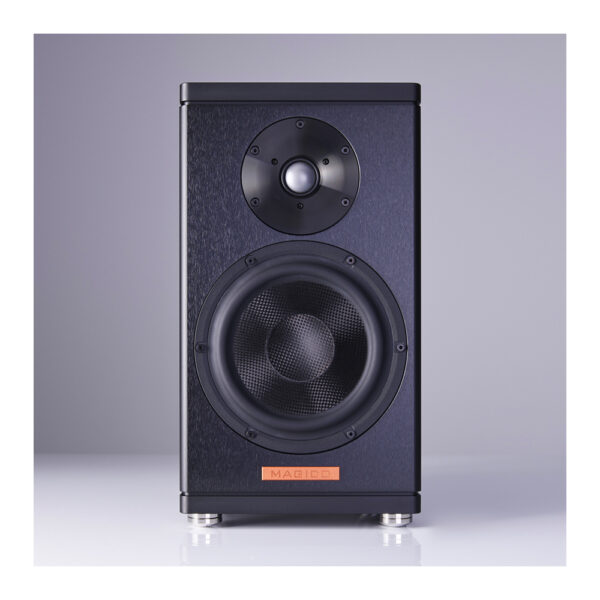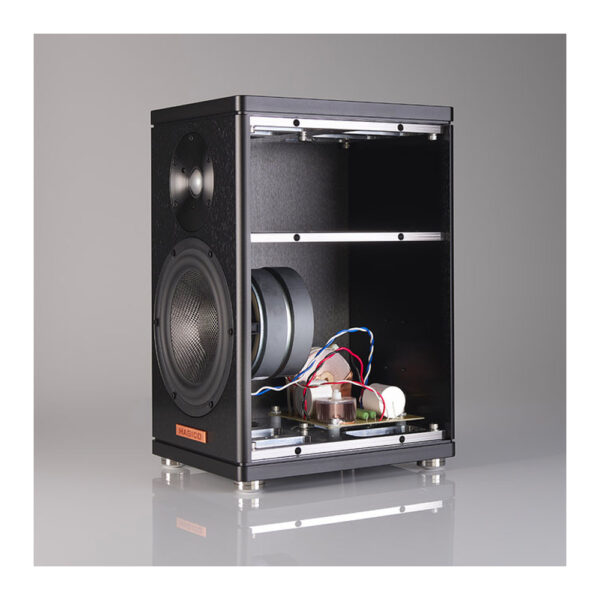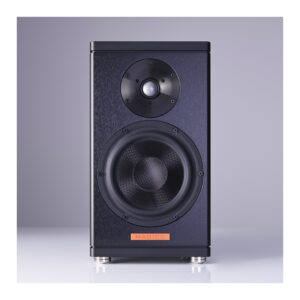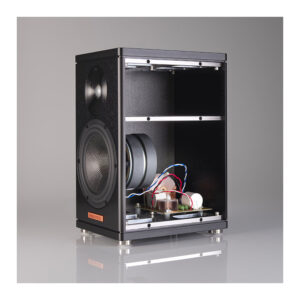The Magico A1 bookshelf loudspeaker features a fully braced aluminum enclosure, beryllium dome tweeter, carbon Nanographene cone, and our renowned elliptical crossover.
The A1 enclosure is constructed using 3⁄8” thick 6061 T6 aircraft grade aluminum, similar to the enclosure developed for the Q1 and is available in an elegant brushed-aluminum, black anodized finish. An innovative internal bracing technique along with the most advanced damping materials makes the sealed enclosure incredibly rigid and free of unwanted mechanical resonances. The complete enclosure design of the A1 is evaluated in simulation using the latest FEA software along with physical testing to meet the uncompromising requirements of Magico for optimized enclosure rigidity, stability and to ensure benchmark acoustical standards.
Featuring the same tweeter as the full range A3, the Magico A1 utilises a pure Beryllium-diaphragm with an optimised 28-mm dome based on the fundamental design platform and geometry of our reference M- Series tweeter. The customized neodymium motor system is encased in an improved back chamber with our latest generation damping materials that facilitate ultra-low distortion, higher power handling, massive dynamic capabilities, and extended linear voice coil movement.
The newly developed 6.5-inch mid-bass driver features a Multi-Wall carbon fiber cone with a layer of XG Nanographene, providing optimal stiffness to weight ratio and an ideal damping factor. The driver frame has been designed, simulated and tested for the optimal combination of stiffness and damping. Minimum acoustical impact is achieved through reducing vibration modes while maximising air flow. The motor system incorporates extra-large magnets to ensure a stabilised magnetic field in the 39- mm pure titanium voice coil. The A1 mid-bass driver is optimised for minimal music related distortions in its bandpass, in both the frequency and time domains using state of the art finite element analysis simulation of acoustical, mechanical, electromagnetic and thermal behavior.




